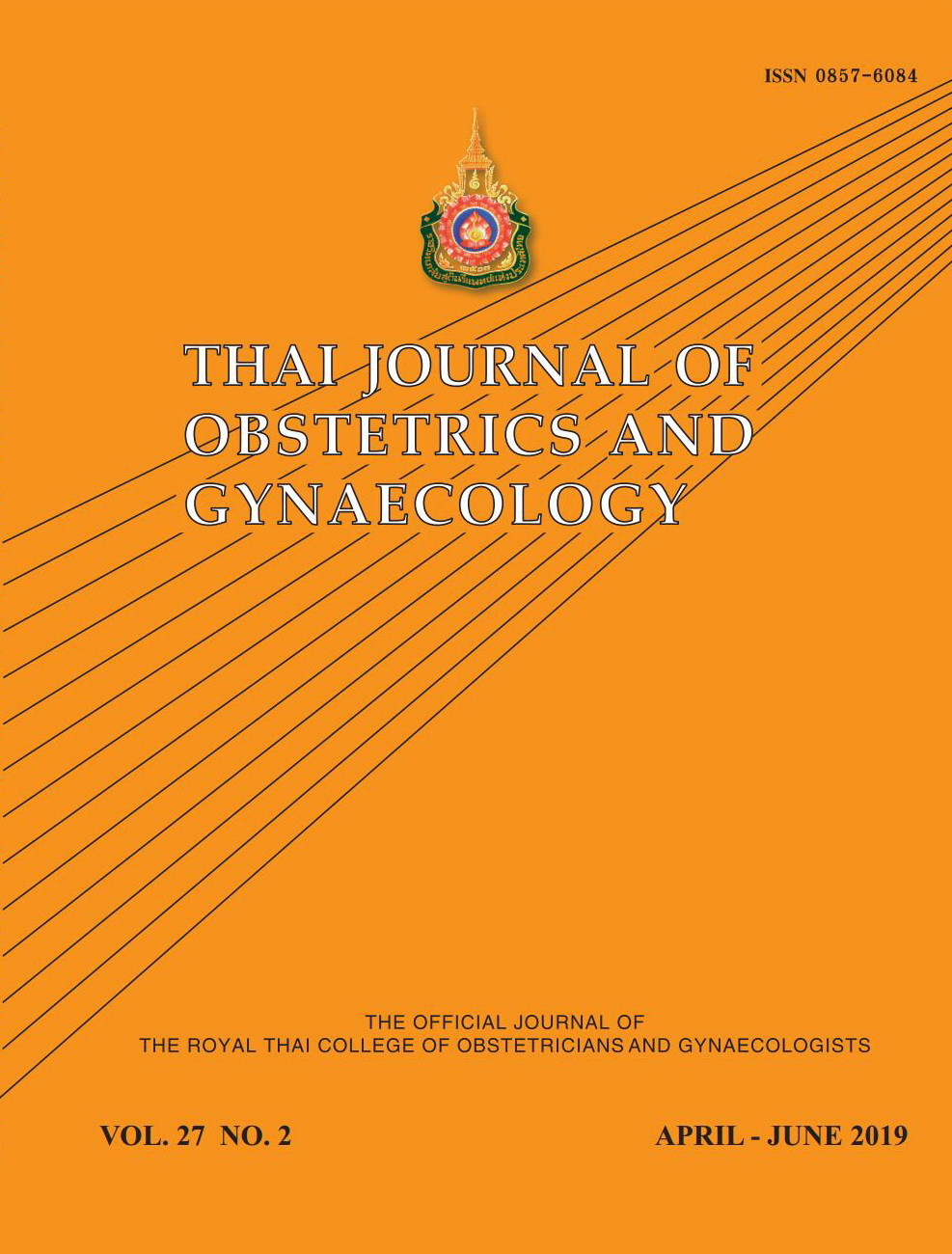Effect of Unfulfilled Standard Antenatal Care on Pregnancy Outcomes
Main Article Content
Abstract
Objectives: To compare pregnancy outcomes between women who received unfulfilled standard versus fulfilled standard antenatal care (ANC) according to the Ministry of Public Health of Thailand (MOPH) guideline as the following; 1st visit as soon as possible but gestational age (GA) not later than 12 weeks of gestation, 2nd visit: GA between 16 - 20 weeks, 3rd visit: GA between 24 – 28 weeks, 4th visit: GA between 30 – 34 weeks and 5th visit: GA between 36 – 40 weeks.
Materials and Methods: A retrospective cohort study was conducted by recruiting medical records of all singleton pregnant women who delivered at the Department of Obstetrics and Gynecology, Faculty of Medicine, Vajira Hospital, Bangkok, Thailand from June 2015 to May 2016. All recruited pregnant women had singleton pregnancies, complete medical data record, certain GA by their last menstrual period or by early ultrasound before GA 28 weeks and GA at delivery equal to 28 weeks or more. Exclusion criteria were women with pre-existing medical conditions and fetal anomalies. Study outcomes were the rates of low neonatal birth weight (< 2,500 g), preterm delivery, low Apgar scores at 1 and 5 minute (< 7), neonatal intensive-care unit (NICU) admission, preeclampsia and postpartum hemorrhage.
Results: From 1,237 pregnant women who met to the eligible criteria, there were 1,170 cases included into the study. Six hundreds and three cases received fulfilled standard ANC and 567 cases received unfulfilled standard ANC. No statistical difference was found in the rates of low neonatal birth weight, preterm delivery, low Apgar scores, NICU admission, preeclampsia and postpartum hemorrhage between both groups. In addition, there were significantly higher rates of previous abortion, advanced maternal age, pre-pregnancy overweight and obesity and lower rates of teenage pregnancy, pre-pregnancy underweight in women who received fulfilled standard ANC.
Conclusions: There was no significant adverse pregnancy outcome in unfulfilled standard compared with fulfilled standard ANC group.
Article Details
References
2. World Health Organization: WHO antenatal care randomized trial: manual for the implementation of the new model. Switzerland: World Health Organization; 2002.
3. National Health Security Office (NHSO): Guideline management for ANC in Bangkok area 2015.
4. Petrou S, Kupek E, Vause S, Maresh M. Antenatal visits and adverse perinatal outcomes: results from a British population-based study. Eur J Obstet Gynecol Reprod Biol 2003; 106: 40-9.
5. Carter EB, Tuuli MG, Caughey AB, Odibo AO, Macones GA, Cahill AG. Number of prenatal visits and pregnancy outcomes in low-risk women. J Perinatol 2016; 36: 178-81.
6. Villar J, Ba’aqeel H, Piaggio G, Lumbiganon P, Miguel Belizán J, Farnot U, et al. WHO antenatal care randomised trial for the evaluation of a new model of routine antenatal care. Lancet 2001; 357: 1551-64.
7. Vogel JP, Habib NA, Souza JP, Gülmezoglu AM, Dowswell T, Carroli G, et al. Antenatal care packages with reduced visit and perinatal mortality: a secondary analysis of the WHO antenatal care trial. Reprod Health 2013; 10: 19-25.
8. American College of Obstetricians and Gynecologists. ACOG Practice Bulletin No. 125: Chronic hypertension in pregnancy. Obstet Gynecol 2012; 119: 396-407.
9. Triped O, Arj-Ong S. Maternal risk factors of low birth weight gain at Maharat Nakornratchasima Hospital. Thai J Obstet Gynaecol 2012; 20: 12-20.
10. Sattayaruk S, Luengratsameerung S, Wiriyasirivaj B, Phaloprakarn C. Antepartum and intrapartum risk factors associated with low one-minute Apgar score: a case-control study. Thai J Obstet Gynaecol 2014; 22: 118-27.


